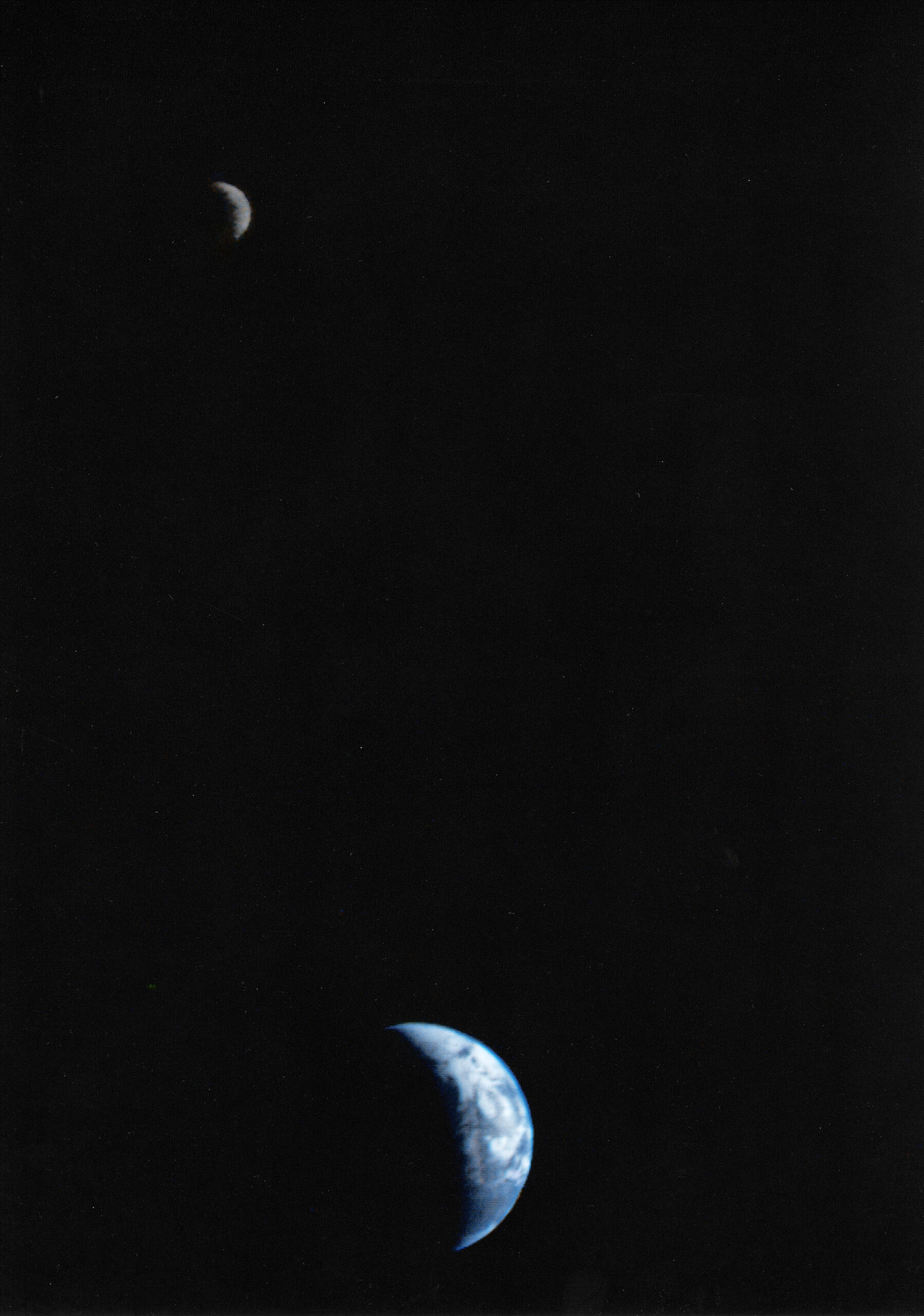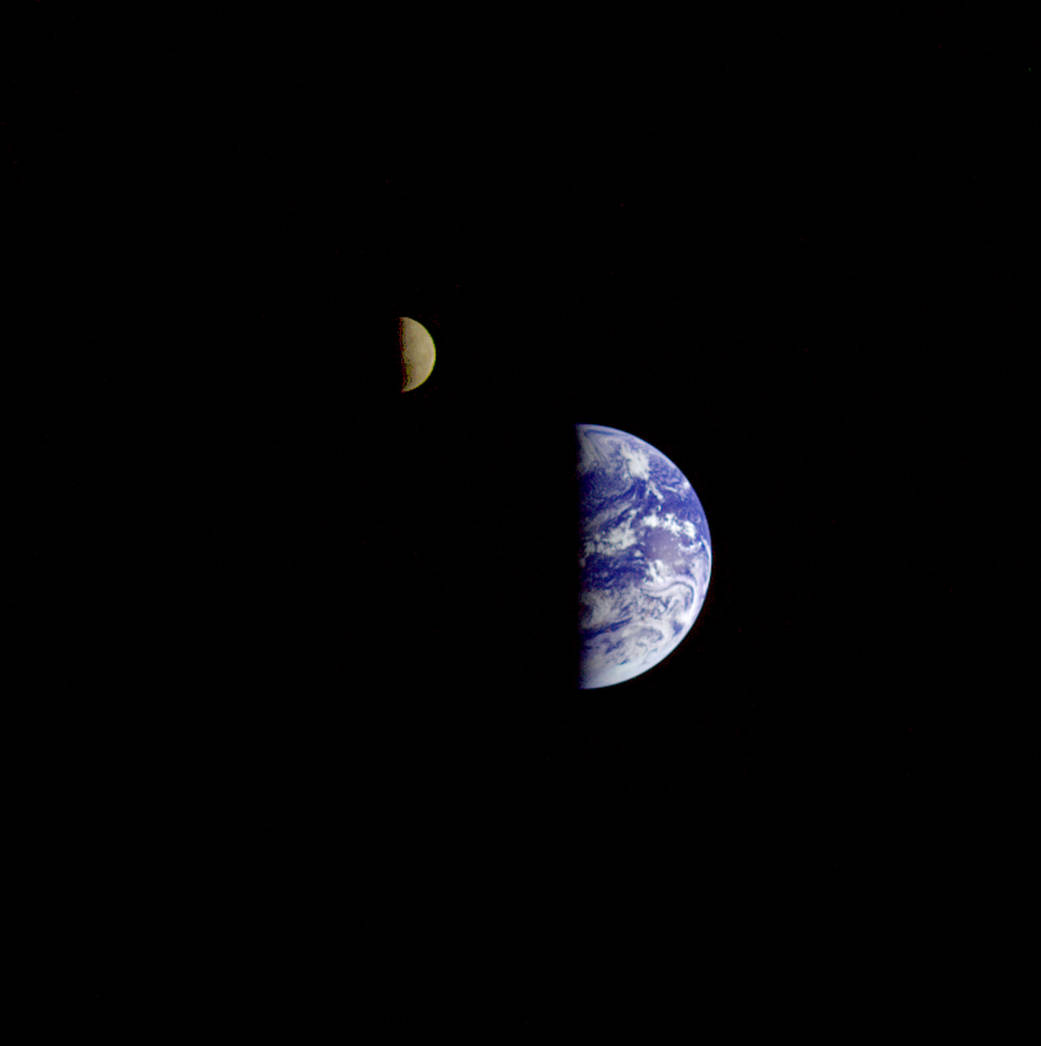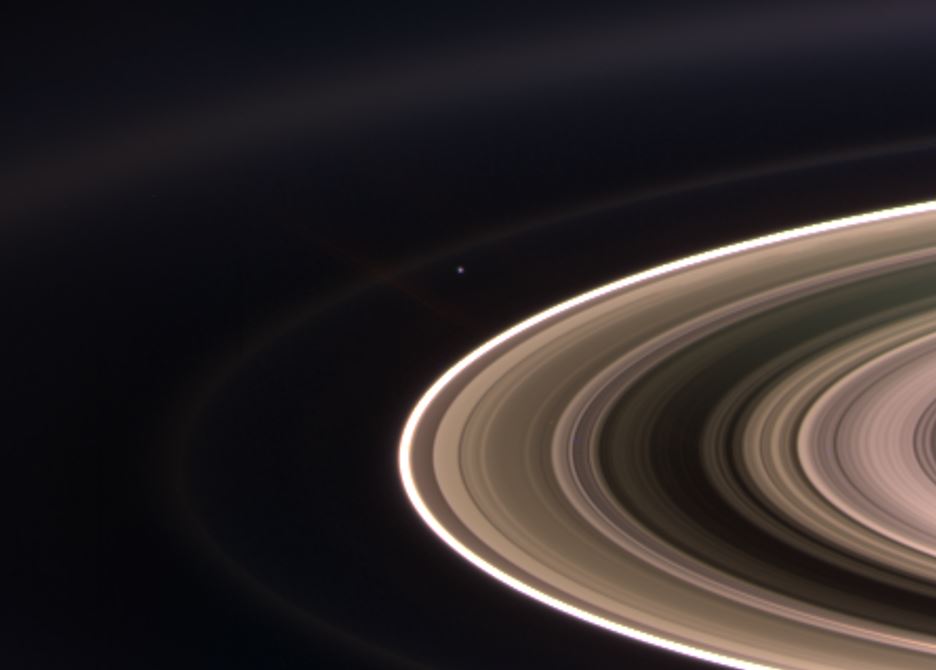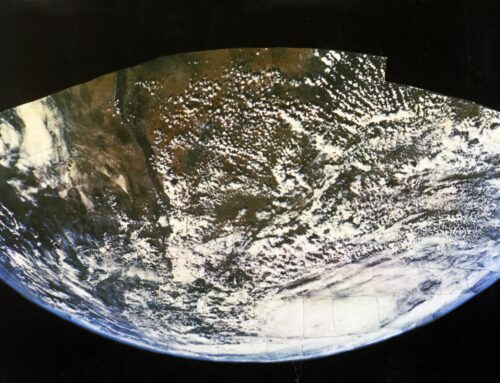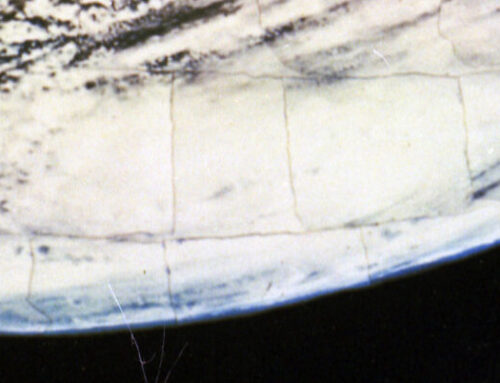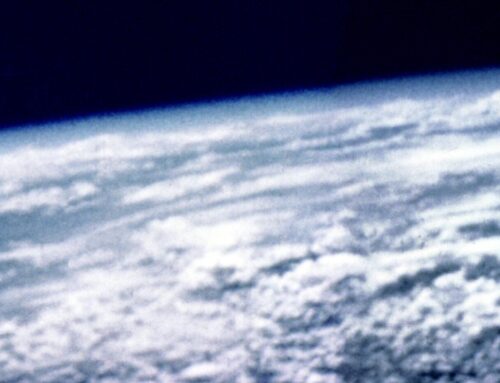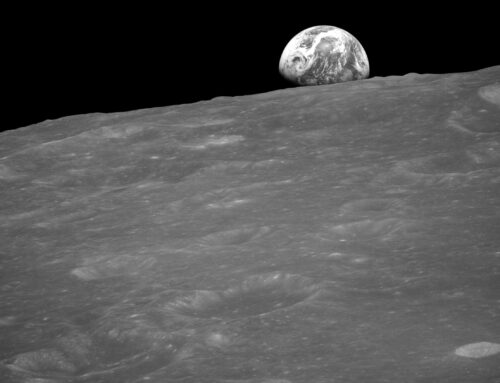A Distant World
At top is a photograph from the Cassini spacecraft at Saturn, approximately 900 million miles from Earth, showing Earth just below the rings on July 19, 2013. Above, the first full-disk picture of both the Earth and the Moon as seen by Voyager I on September 18, 1977. Voyager 1 snapped this picture approximately 7.25 million miles from Earth. This was the first image to show both the full Earth and Moon in the same frame.
Robotic spacecraft have ventured deep into space, far more distant than human beings have yet travelled, allowing a perspective that we could previously only imagine. The Voyager I spacecraft was the first to image the Earth and Moon together on its way out to Jupiter and Saturn, the first probe to visit those planets, and now exploring interstellar space. Fifteen years later, on December 16, 1992, the Galileo spacecraft took the image below of the Earth and Moon together on the way to its mission at Jupiter (the Moon has been brightened in the image for better visibility).
On Valentine’s Day, February 14, 1990, Voyager I gave us an even more distant view of our planet with the Pale Blue Dot – the first image of Earth taken from beyond the planets in our Solar System. The Earth is visible as a pale dot at center right in a scattered ray of sunlight. The image was taken at a distance of 3.7 billion miles (6 billion kilometers) from the Sun. The esteemed scientist, Carl Sagan, wrote in his book, Pale Blue Dot: A Vision of the Human Future in Space, “Look again at that dot. That’s here. That’s home. That’s us.”
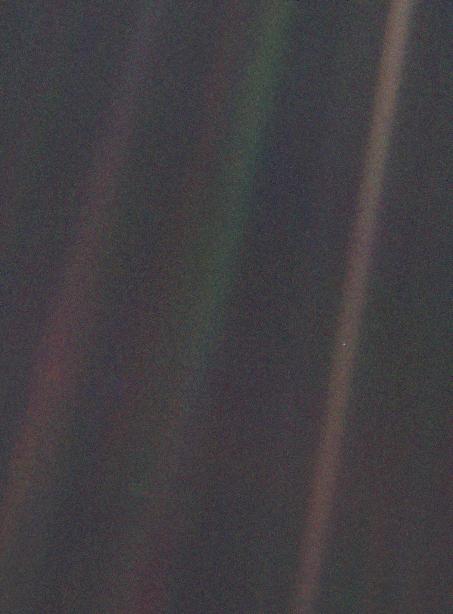
Voyager I, February 14, 1990, Earth as a “Pale Blue Dot” from 3.7 billion miles. Credit: NASA/JPL-Caltech
The Cassini spacecraft, launched to study the Saturnian system, provided a number of incredible images of the Earth. Below is the “Shadow of the Rings” image, a panoramic mosaic created by combining 165 images taken by Cassini on Sept. 15, 2006, when Cassini was 930 million miles from Earth. Earth is barely visible as a pale dot just below the faint ring to the left of the planet.
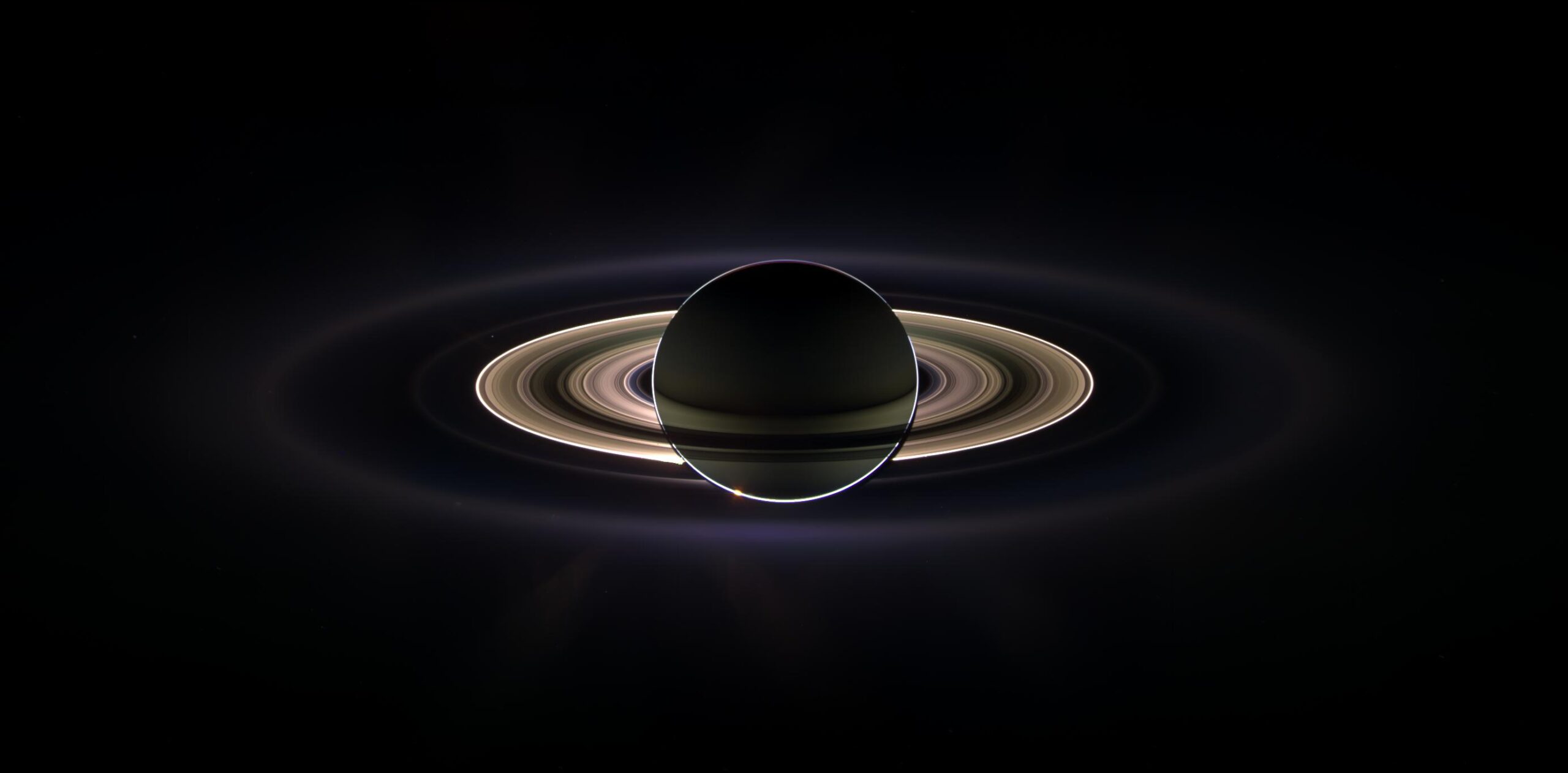
In the Shadow of the Rings, 930 million miles from Earth. Credit NASA/JPL-Caltech/Space Science Institute
Earth seen from 930 million miles appearing between Saturn’s rings.
On July 19, 2013, the Cassini spacecraft captured Saturn’s rings and our planet and moon in the same frame, in an image known as “the Day Earth Smiled.” The image was taken approximately 753,000 miles from Saturn and 898 million miles from Earth, which appears as a blue dot at center right just below the rings. The moon can be seen as a faint protrusion on the Earth’s right side. This was only the third photograph of Earth taken from the distant reaches of our solar system, and the first that Earthlings knew the photo would be taken in advance, hence the name “the Day the Earth Smiled.”
Cassini also captured a close-up image of the Earth and moon from Saturn on July 19, 2013. Earth is a pale blue point of light on the left, with the moon a fainter white dot on the right.
And there we are. All that we are. A pale blue dot with a paler neighbor beside. Specks of reflected light in the empty cold dark space between us and the next speck. All that we know. All our lives, all our loves, all plans, schemes, desires and designs, throughout all of time, on an insignificant, but essential, dot of dust.

Remastered image of “The Pale Blue Dot”, February 5, 2019. Processed by JPL engineer Kevin M. Gill with input from image’s original planners, Candy Hansen and William Kosmann. NASA/JPL-Caltech
Will we evolve? Will we move forward? Or will we simply fade…


